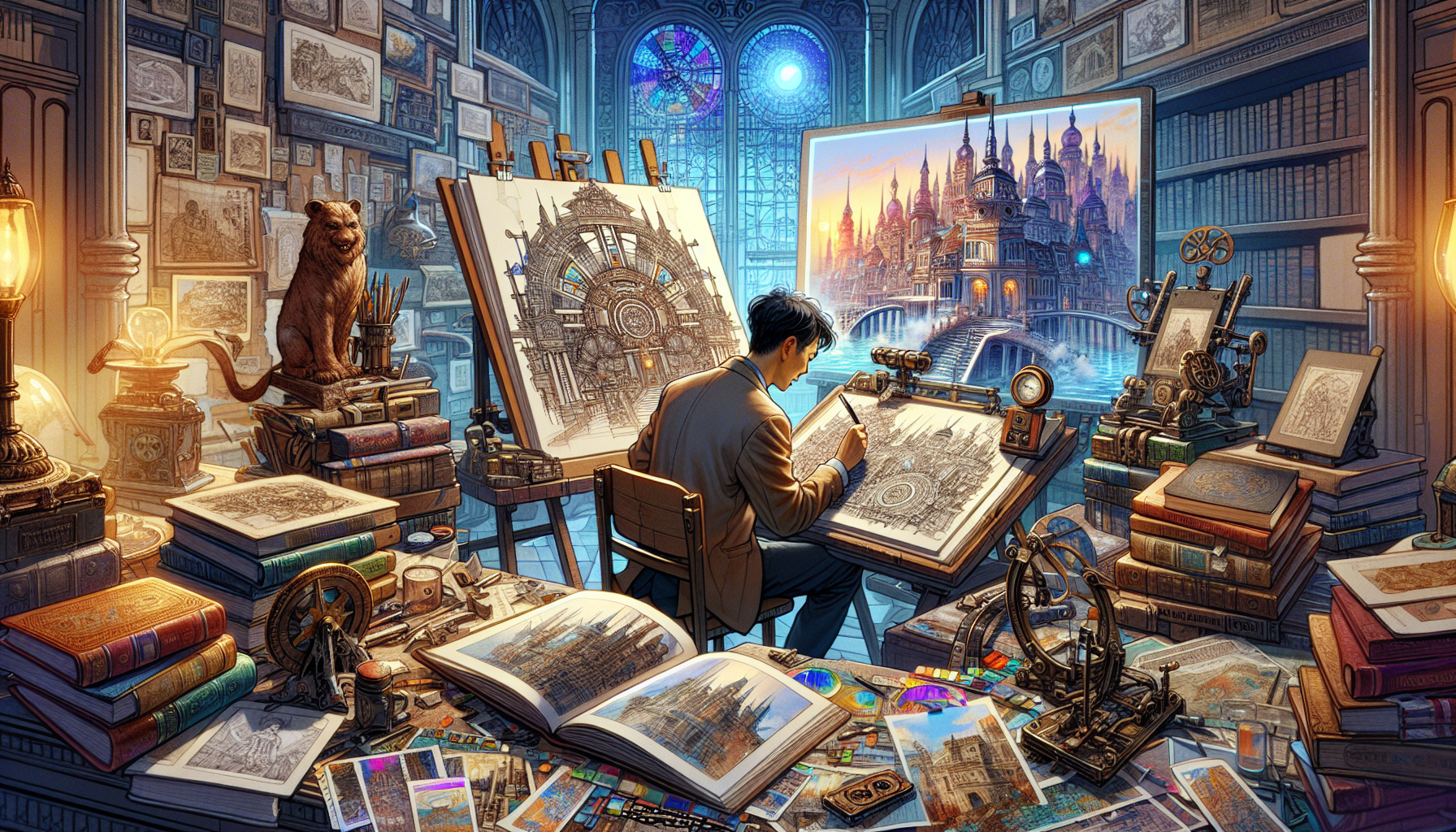
Why Every Blade of Grass Matters: The Power of World-Building in Animated Films
Picture this: you’re nestled comfortably in your cinema seat, popcorn in hand (extra butter, of course), and as the lights dim, you’re whisked away to a land where animals sing, robots fall in love, and entire civilizations live on the back of a giant turtle. Welcome to the magic of animated films where world-building isn’t just a fancy term tossed around in production meetings; it’s the secret sauce that transforms a good animation into a transportive, multi-dimensional sensory feast.
Setting the Stage: The Foundation of Fantasy
What exactly is world-building? Think of it as the art of convincing lies. It’s the process of constructing an internally consistent background for the story to unfold. It’s not just about deciding whether the trees are neon pink or if the mountains float; it involves creating a universe where its inhabitants follow a set of rules as rigorously as we follow traffic lights. Every detail of the environment, culture, laws of physics, and societal norms are crafted to make you forget that you’re staring at elaborate sequences of drawings or computer-generated imagery.
The Devil is in the Details
Consider the sweet jazz-infused lanes of Disney’s The Princess and the Frog or the meticulously layered spirit world of Miyazaki’s Spirited Away. These worlds are immersive, not just because they’re visually stunning, but because their creators took the time to marinate the viewer in every conceivable detail. From the way a character’s home is decorated to the specific hues of the evening sky, every element builds credibility and depth.
The Ripple Effect of Realistic Realms
So, why invest in world-building? Why not just throw a bunch of characters into any backdrop and call it a day? Well, let’s just say a film’s setting is like the bassline of a killer track—it might not always scream for attention, but you’d miss it like crazy if it wasn’t there. A well-built world can elevate storytelling, providing a richer backdrop against which characters’ dramas can unfold. In essence, it turns setting from a passive backdrop into an active storyteller.
More Than Just Eye Candy
Take Pixar’s Wall-E for instance. Essentially, it’s a love story about loneliness (and adorable robots), but set against a deserted, trash-engulfed Earth, the narrative speaks volumes on environmental neglect and consumerism without a single preachy line. Here, the world-building isn’t just beautiful—it’s downright revolutionary.
Invitation to Another Universe
Good world-building doesn’t just dazzle; it invites audiences into an experience, urging them to lean in and engage rather than simply spectate. It can create a playground for the imagination, encouraging viewers to explore long after the credits roll. Kids and adults alike wander out of the theater carrying a piece of that world in the soles of their shoes, debating the mechanics of a multidimensional portal or the diet of a two-headed dragon.
A Legacy of Living Worlds
A film’s enduring appeal often rests in these crafted universes. Worlds like the candy-laden tracks of Wreck-It Ralph or the super-detailed animal cityscape of Zootopia resonate because they are believable spaces where stories live and breathe. They capture imaginations and become cultural touchstones.
From the Drawing Board to Iconic
Flashy visuals alone aren’t enough. Animation giants like Disney, Pixar, and Studio Ghibli don’t just draw—they architect. They understand that world-building isn’t an afterthought; it’s where the magic begins. Whether it’s crafting the culture of a fictional tribe or engineering the physics of a planet made of jelly, the dedication to this craft is what turns animations from watchable to iconic.
The Alchemy of Animation
In the vast world of animated films, world-building is paramount. It’s an alchemy of art, storytelling, and pure imagination. Next time you dive into an animated masterpiece, take a moment to appreciate the worlds they lay before you. After all, someone, somewhere made a conscious decision that the grass should be just that shade of green—and trust me, it wasn’t just a shot in the dark.






